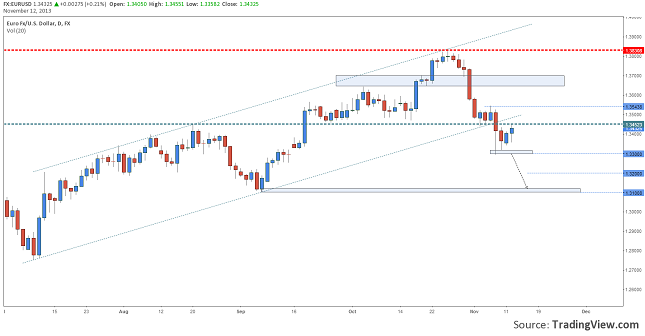By WallStreetDaily.com
As everyday investors, we often get belittled for being the “dumb money” in the market.
We’re unsophisticated and always late to the opportunity. Therefore, we’re destined to underperform.
Given such dismal proclivities, what are we supposed to do – give up? Of course not!
The “smart money” counts on us to willingly (and stupidly) keep parting ways with our capital in the market.
All the while, we’re supposed to envy their super-sophisticated strategies they employ as venture capitalists, hedge fund managers and private equity firms.
Admit it, at some point you’ve dreamt that you made a quick fortune and were suddenly qualified to invest alongside these so-called market mavens.
But did you ever think to ask if the smart money actually, well… makes any money?
You should. Because a quick look at the scoreboard reveals that there’s absolutely no reason for you to envy them in any way…
Who Wants to Be a Venture Capitalist? Not Me!
In the wake of Twitter’s (TWTR) IPO, articles abound promising to enlighten investors on how to find the next great venture capital company.
Ignore them all.
As I revealed earlier in the year, the venture capital (VC) model is mortally wounded. Just ask insiders…
After analyzing its 20-year history of VC investing, the Ewing Marion Kauffman Foundation found that its returns “haven’t significantly outperformed the public market since the late 1990s. [And] since 1997, less cash has been returned to investors than has been invested in VC.”
Or, more specifically, after accounting for fees, the majority of its funds (62 out of 100) failed to outperform investing in the stock market.
A simple exchange-traded fund like the SPDR S&P 500 Fund (SPY) would have performed nearly as well (if not just as well) – all without the hassle, long holding period and expense.
Privacy is Overrated
Lest you think the venture capital failure is an exception to the “smart money” norm, consider the latest research on private equity (PE) funds…
Professors at Columbia University, Shanghai University and the Columbia Business School just published a working paper in the National Bureau of Economic Research. It’s not going to win them any fans on Wall Street, though…
According to the report, “Conventional interpretations of PE performance measures appear optimistic.”
(You mean Wall Street’s elite played up their ability to make money? Who knew!?)
The academics go on to conclude (emphasis mine), “On average, LPs may just break even, net of management fees, carry, risk and costs of illiquidity.” (In case you don’t know, “LP” stands for “limited partner,” which is Wall Street jargon for the high-net-worth investors who get to invest in PE funds.)
I’m sorry, but they don’t look too smart when they just “break even” on their investments.
As Barron’s Brendan Conway notes, everyday investors can easily outperform illiquid PE funds by simply purchasing shares of publicly traded companies with PE exposure – like Blackstone Group (BX) and Fortress Investments Group (FIG).
For instance, Blackstone rose an average of 31.9% per year over the last five years, compared to a 16.3% average annual return for the S&P 500.
Too Much Hedging Going On
Billionaires Jim Rogers and George Soros are the poster boys for the hedge fund movement.
They started the Quantum Fund way back in 1973 and delivered 4,200% returns over the next decade. Ever since then, trillions in investment dollars have been chasing the same dream.
Fast forward to today, and hedge funds now control a record $2.51 trillion in assets, according to industry tracker, Hedge Fund Research.
Yet their performance isn’t breaking records…
For the first nine months of 2013, the average hedge fund – represented by The HFRI Fund Weighted Composite Index – is up only 5.5%. That compares to a roughly 20% rise for the S&P 500 Index over the same period.
This isn’t a short-term hiccup, either.
If we evaluate the performance over the last decade, the average hedge fund returned 5.92% per year, compared to an average annual return of 7.57% for the S&P 500.
Once again, a simple, low-cost, “dumb” investment in the SPDR S&P 500 Fund would have performed better.
Bottom line: Warren Buffett was on to something in his 1993 letter to shareholders when he wrote, “By periodically investing in an index fund… the know-nothing investor can actually outperform most investment professionals. Paradoxically, when ‘dumb’ money acknowledges its limitations, it ceases to be dumb.”
So whenever you find yourself coveting the investment prowess of the smart money, just remember that they can be just as clueless – if not more so – than the average investor.
Ahead of the tape,
Louis Basenese
The post Three Reasons the “Smart Money” Looks Pretty Dumb appeared first on Wall Street Daily.
Article By WallStreetDaily.com
Original Article: Three Reasons the “Smart Money” Looks Pretty Dumb









